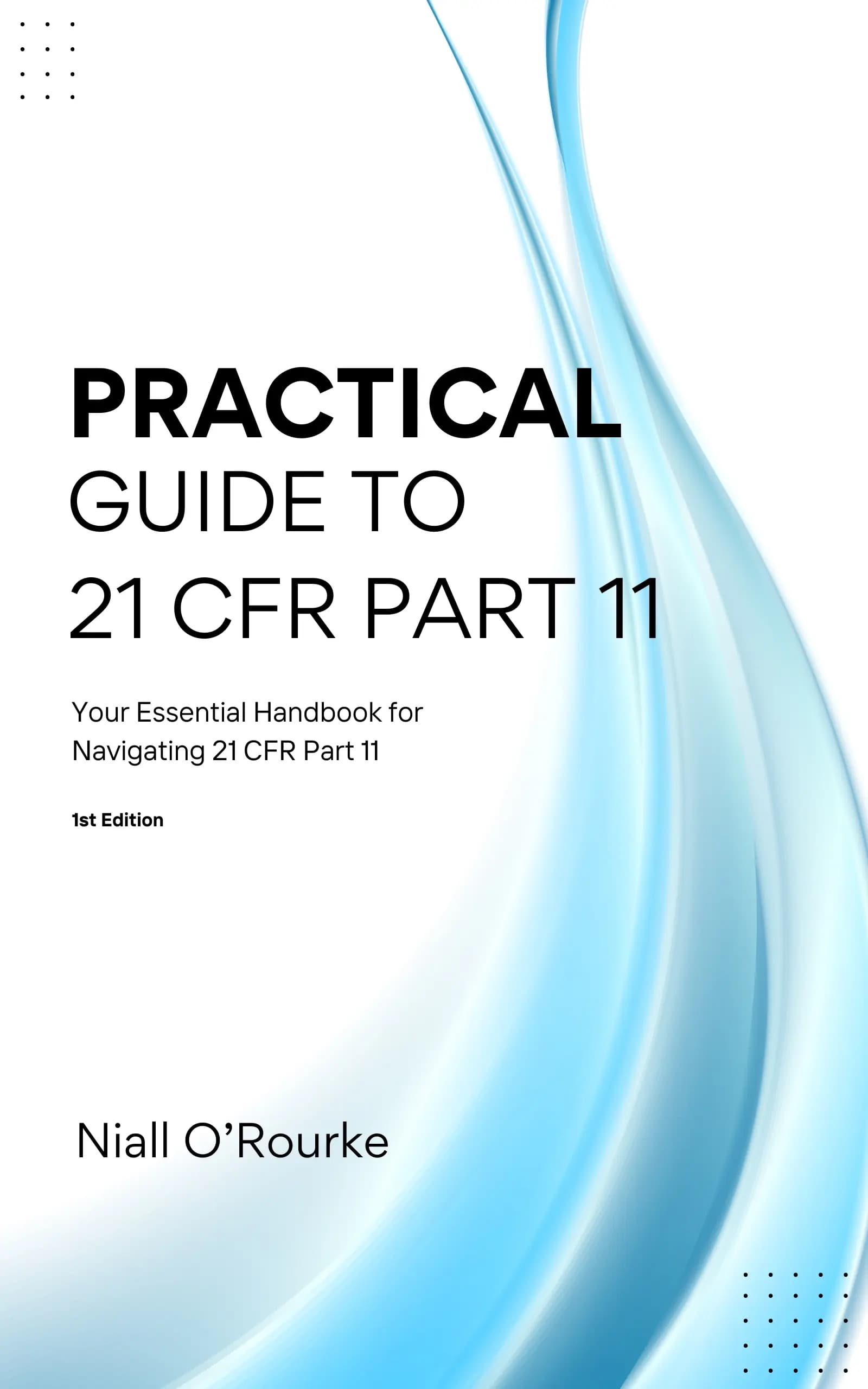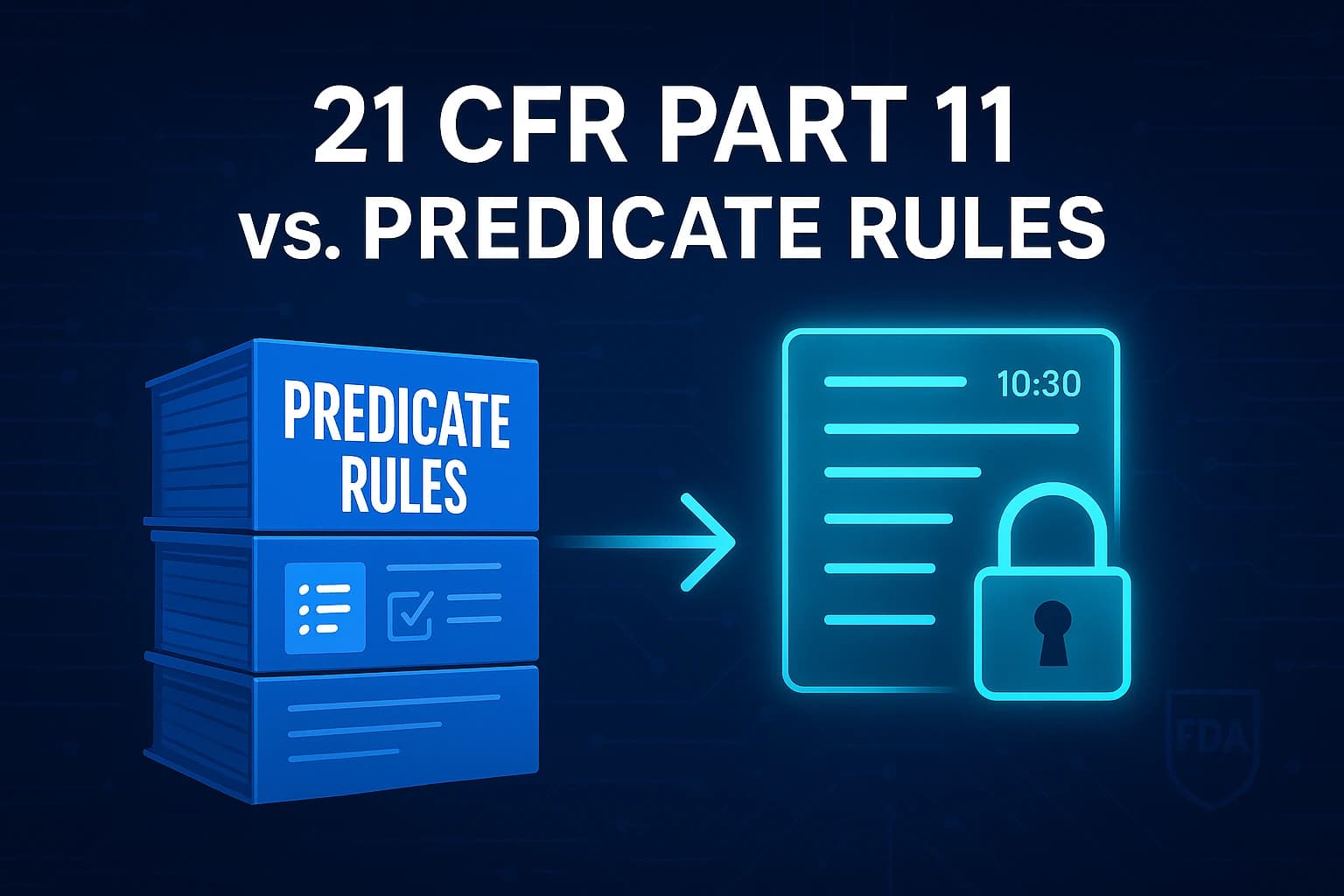TL;DR
21 CFR Part 11 and FDA predicate rules work together to ensure reliable record-keeping in regulated industries. Predicate rules specify which records are required and their retention period, while Part 11 ensures that electronic records and signatures are secure and trustworthy. To comply, organizations storing records electronically must meet both sets of requirements.
21 CFR Part 11 vs. Predicate Rules: Understanding Their Relationship
In regulated industries such as pharmaceuticals, medical devices, and biologics, compliance with FDA regulations is critical. Two essential regulatory frameworks that organizations managing electronic records must understand are 21 CFR Part 11 and predicate rules. While Part 11 defines requirements for electronic records and signatures, predicate rules outline foundational record-keeping expectations. This article breaks down the intersection of these regulations and provides practical insights for compliance.
What Are Predicate Rules?
Predicate rules refer to FDA regulations specifying the what, how, and how long of record-keeping. These rules, found across various parts of Title 21 of the Code of Federal Regulations (CFR), are the foundation for documentation in FDA-regulated activities. Predicate rules define:
- What records must be maintained (e.g., production or quality control records).
- What information these records must contain for completeness.
- How long records must be retained for audit and review purposes.
These requirements apply to FDA-regulated activities, whether records are stored on paper or electronically.
Examples of Predicate Rules
Different sections of Title 21 outline specific predicate rules for various regulated activities. Here are a few notable examples:
-
21 CFR Part 211 – Current Good Manufacturing Practice (cGMP) for Finished Pharmaceuticals
- Section 211.100: Requires documented procedures for production and process control.
- Section 211.180: Mandates record retention for at least one year after batch expiration.
-
21 CFR Part 820 – Quality System Regulation for Medical Devices
- Section 820.30: Requires documentation for design controls, including verification and validation.
- Section 820.70: Mandates process control procedures to ensure consistent product quality.
-
21 CFR Part 58 – Good Laboratory Practice (GLP) for Nonclinical Laboratory Studies
- Section 58.195: Specifies retention of study records to support data integrity.
-
21 CFR Part 606 – cGMP for Blood and Blood Components
- Section 606.100: Requires SOPs for blood collection and processing.
- Section 606.160: Mandates detailed recordkeeping for product quality and traceability.
-
21 CFR Part 312 – Investigational New Drug (IND) Application
- Section 312.62: Requires investigators to maintain subject case histories and related data for clinical studies.
The Role of 21 CFR Part 11
21 CFR Part 11 applies to records required by predicate rules when stored electronically. The regulation aims to ensure that electronic records and signatures are reliable, trustworthy, and equivalent to paper records and handwritten signatures. Key provisions include:
- Electronic Signatures: Ensuring each signature is unique to an individual and requiring identity verification.
- Audit Trails: Secure, time-stamped logs that record actions affecting electronic records.
- Access Controls: Implementing access restrictions to ensure only authorized individuals can create, modify, or delete records.
The Intersection of Predicate Rules and 21 CFR Part 11
When predicate rule-mandated records are stored electronically, they fall under the scope of both predicate rules and 21 CFR Part 11. Here’s how these requirements interact:
- Foundational Requirements (Predicate Rules): Define the necessary records and information retention for regulated activities.
- Electronic Controls (Part 11): Require additional security measures for electronic records, including access restrictions, audit trails, and electronic signature verification.
Combined Compliance: What It Means in Practice
Storing predicate rule-required records electronically requires compliance with both predicate rules and Part 11. This means:
- Creating records as required by predicate rule specifications (e.g., content and retention time).
- Implementing Part 11 controls for data integrity and security, such as limiting access to authorized users, recording actions in an audit trail, and ensuring unique, verifiable signatures.
Practical Tips for Ensuring Compliance
- Understand Predicate Rule Requirements: Identify the relevant predicate rules for each regulated process (e.g., Part 211 for pharmaceuticals, Part 820 for medical devices).
- Assess Systems for Part 11 Compliance: Ensure your electronic system supports both the predicate rule requirements and Part 11 security measures.
- Document Procedures and Controls: Create written procedures for record maintenance, access, and security to support Part 11 compliance.
- Regular Audits and Reviews: Conduct regular audits of electronic systems and processes to verify compliance with both frameworks, especially after updates or changes.
Key Takeaways
- Predicate Rules Are the Foundation: Predicate rules define essential records and retention requirements in regulated industries.
- 21 CFR Part 11 Adds Requirements for Electronic Records: Part 11 ensures the reliability and integrity of electronic records through security controls.
- Combined Compliance Is Essential: Electronic records subject to predicate rules must comply with both frameworks for full regulatory adherence.
- Stay Updated on FDA Guidelines: Regularly review FDA updates to ensure ongoing compliance with predicate rules and Part 11.
By understanding the relationship between predicate rules and 21 CFR Part 11, organizations can effectively manage electronic records, maintain regulatory compliance, and ensure data integrity across their digital systems.

Practical Guide to 21 CFR Part 11
Your Essential Handbook for Navigating 21 CFR Part 11
"An invaluable resource for anyone working with computerised systems in pharma."
Conor
Quality Assurance
Available on Amazon United Kingdom

